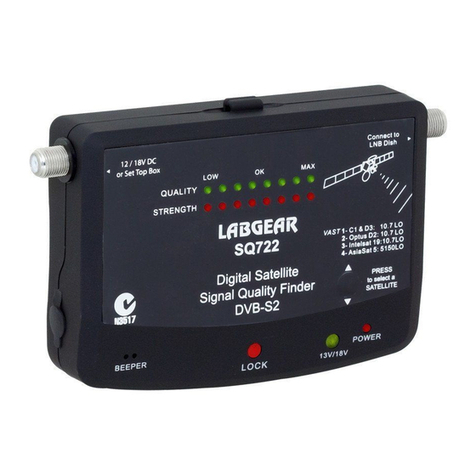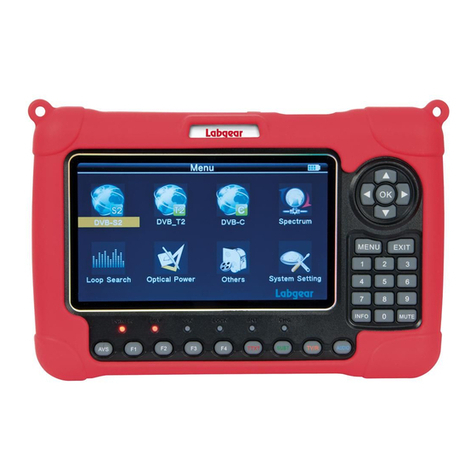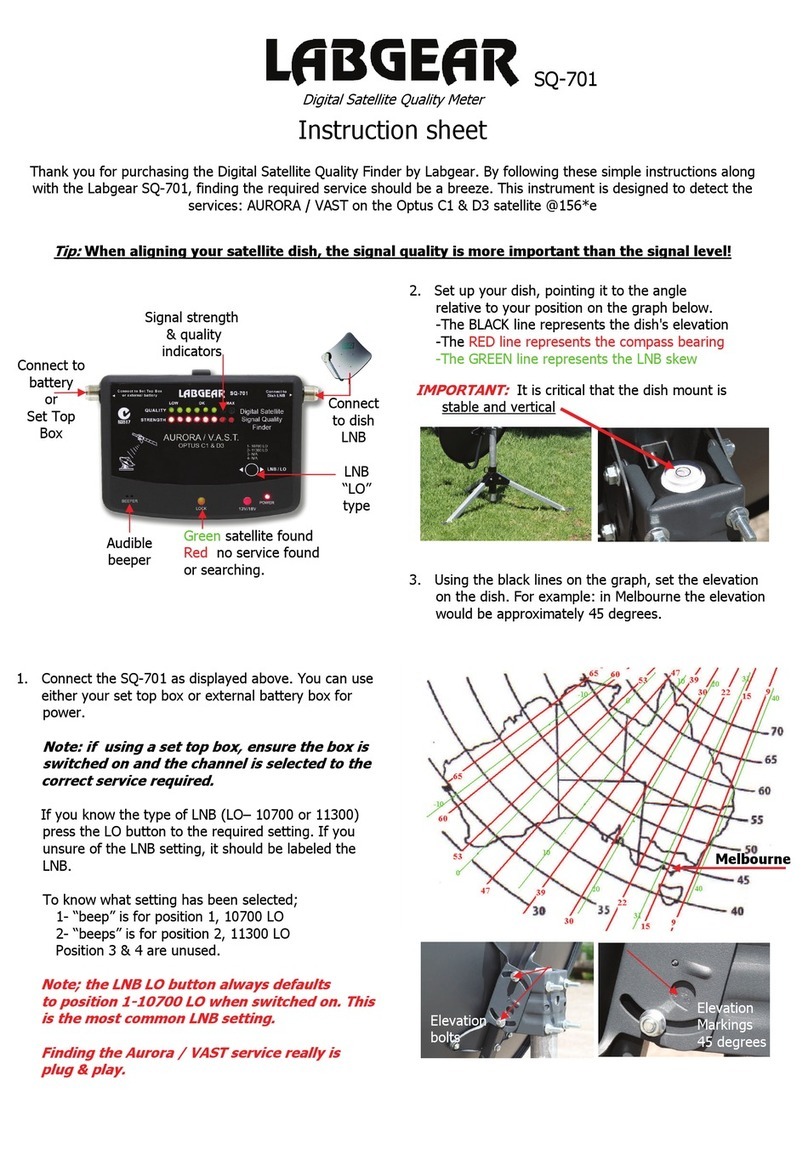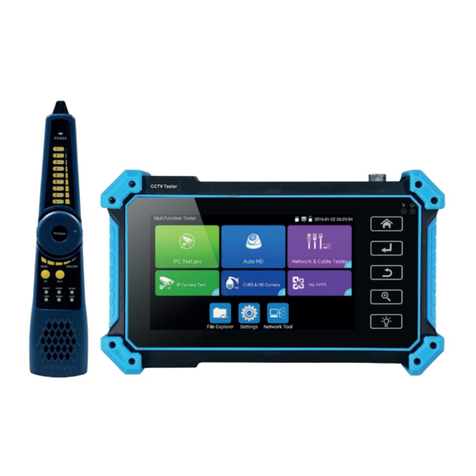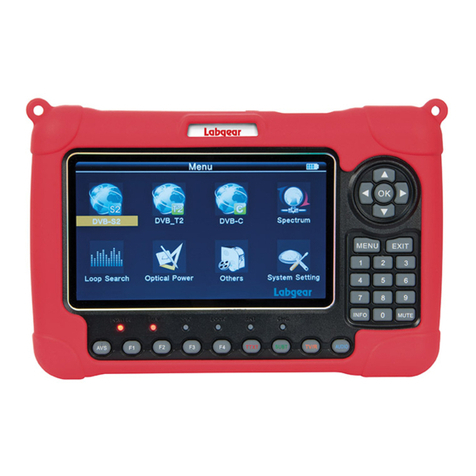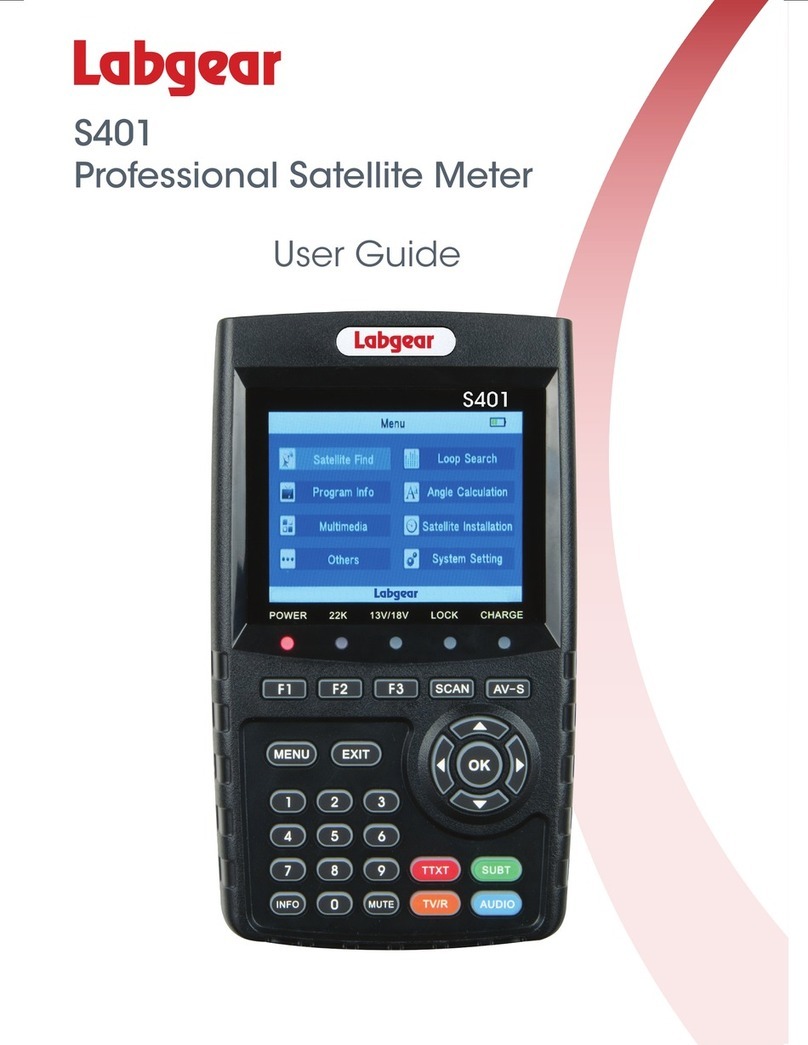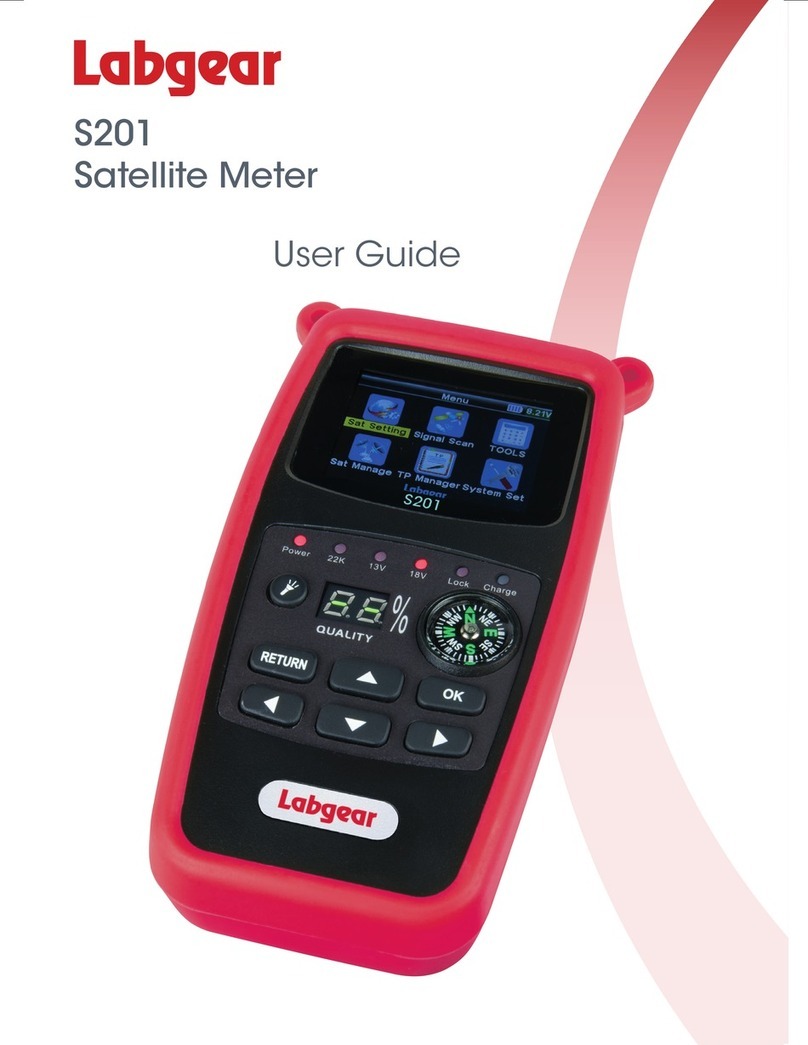
7
Guard interval......................................................................... 1/32, 1/16, 1/8, 1/4
Hierarchical modulation type .................................................. α=1, α=2, α=4
ode rate................................................................................ 1/2, 2/3, 3/4, 5/6, 7/8
hannel power range, Digital....................................................... 30 to 110 dBµV
MER measurement range (for QAM64, code rate 3/4) ................ 14 to 35 dB
MER measurement resolution ..................................................... 0.1 dB
MER measurement accuracy at operating channel power........... ±2.0 dB
BER measurement range
preBER................................................................................... 1.0x10
-1
to 1.0x10
-8
postBER ................................................................................. 1.0x10
-2
to 1.0x10
-8
hannel power threshold (postBER less than 2x10
-4
)
For QAM64, code rate 3/4, SNR=46 dB ................................. 40 dBµV
Frequency auto tuning range ....................................................... ±0.500 MHz
Warm-up time, less than .............................................................. 5 min
DAT103 powering options:
A mains via 90-264V 50/60 Hz 12V/1.2A charger included
10 to 14 V D external source, with ripple level no greater than …………0.5 V
internal Li-ion battery of 1500 mAh capacity
urrent consumed from external power source or batteries, not greater than …0.6 A
AMP power supply voltage settings…………………….……..…… 12V or 24V
AMP power supply power, no more than………………………..…. 3 W
Power from external D continually for no more than ………………………….…24 hrs
Typical battery charge life under normal conditions (1500 mAh capacity)……… 3 hrs
Mean time between failures, no less than.................................... 10,000 hours
Average life expectancy............................................................... exceeds 5 years
Dimensions.................................................................................. 193 x 94 x 53 mm
Package dimensions.................................................................... 255 х 180 х 70 mm
Weight.......................................................................................... 0.5 kg
Weight in package ....................................................................... 0.95 kg
2.4.1 Construction
The DAT103 is a quality handheld electronic instrument built in a tough plastic field
case that fits snugly in its matching soft shockproof holster.
The front of the Analyzer includes a silicon keypad and a graphical Liquid rystal
Display (Figure 1.1). The bottom panel has a USB P connector and an external power
source connector (Figure 1.2). The 75-Ohm RF input on the top panel is an “F”-male
connector to which an “F” female – female adapter should be used, which makes the RF
input connector replaceable.
3 PREPARING TO OPERATE
When you first receive your instrument, check the contents against the list provided
(Section 2.3). heck the outside of your instrument to make sure your DAT103 is free
from any signs of mechanical damage.
If the DAT103 has been stored in an extremely humid, hot or cold environment, allow it
to acclimatize for at least for 2 hours before powering up.












